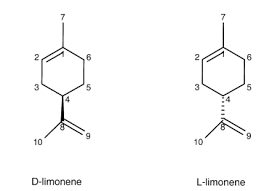Blog - Aure Chemical
What is Dipentene? The Complete Guide to DL-Limonene
If you've ever looked at the ingredient list of an industrial cleaner or a paint solvent, you may have seen the name Dipentene. But what exactly is this substance, and how does it relate to other common chemicals? In short, Dipentene is a widely used industrial compound, but its true identity is often hidden behind a more familiar name: DL-Limonene.
This article will demystify Dipentene, explaining its chemical nature, its relationship to other forms of Limonene, and its practical uses in various industries.
Dipentene vs. DL-Limonene: A Matter of Terminology
One of the most common points of confusion is the interchangeable use of these two terms. Dipentene is a historical and industrial name for DL-Limonene. Chemically speaking, they are the exact same substance. While "Limonene" is the more scientifically precise name, "Dipentene" is frequently used in commercial and technical contexts, especially in North America.
Understanding this synonymy is the key to unlocking the true identity of this chemical. It tells us that Dipentene is not a unique compound but a specific form of the well-known terpene, Limonene.
Understanding the Chemistry: The Racemic Mixture
To fully grasp what Dipentene is, you need to understand the concept of a racemic mixture.
Limonene is a chiral molecule, which means it has two non-superimposable mirror-image forms, much like your left and right hands. These two forms are called enantiomers, and they have different properties, particularly their scent:
D-Limonene (+)-Limonene: This is the most common form, known for its powerful citrusy aroma. It's naturally found in the peels of oranges, lemons, and other citrus fruits.
L-Limonene (-)-Limonene: This form has a much different odor, often described as having a turpentine or pine-like smell. It is less common in nature.
Dipentene (or DL-Limonene) is a 1:1 mixture of D-Limonene and L-Limonene. Because the two forms perfectly cancel each other out, this mixture is optically inactive and has a much milder, less distinct citrus aroma than pure D-Limonene.
Common Uses of Dipentene
The unique properties of Dipentene—particularly its solvency and mild odor profile—make it an extremely versatile chemical. It is widely used across a range of industrial and consumer products:
As a Solvent: Dipentene is an effective solvent for resins, waxes, and oils. It is a key ingredient in many paint removers, degreasers, and industrial cleaning agents.
In Fragrance: While its aroma is less pronounced than D-Limonene, it is still used as a scenting agent in some household products.
As a Raw Material: It serves as a precursor for the synthesis of other chemicals, including synthetic resins, adhesives, and flavorings.
In Cleaning Products: Its ability to dissolve grease and grime makes it a popular choice for all-purpose and heavy-duty cleaners.
Conclusion
In conclusion, Dipentene is a vital industrial chemical that is identical to DL-Limonene. Its identity as a racemic mixture of D-Limonene and L-Limonene is what defines its properties and allows it to serve as an effective, versatile solvent and raw material in countless applications. By understanding the relationship between these names, you gain a clearer picture of the chemistry behind many of the products you use every day.

